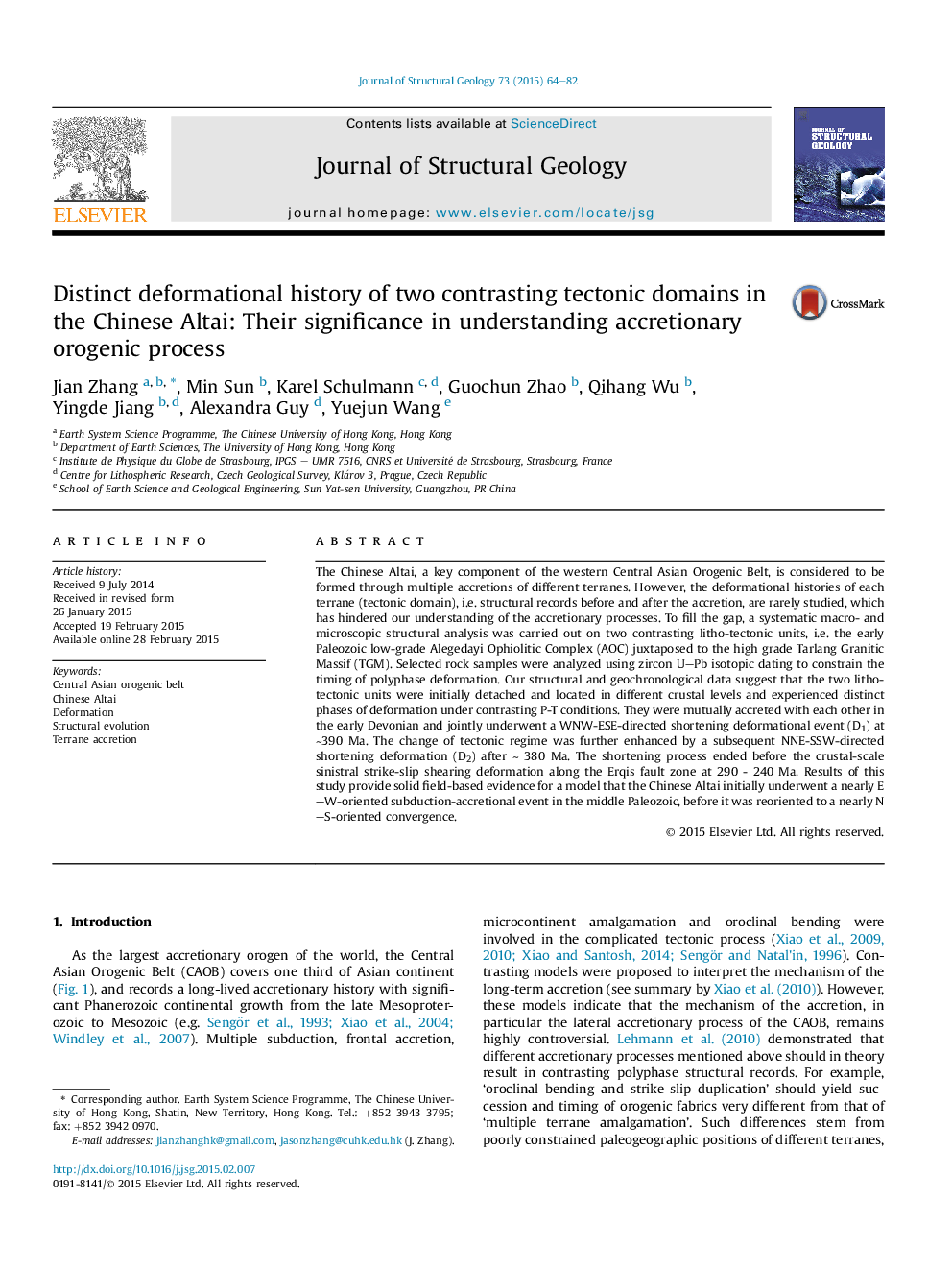| کد مقاله | کد نشریه | سال انتشار | مقاله انگلیسی | نسخه تمام متن |
|---|---|---|---|---|
| 4732999 | 1640507 | 2015 | 19 صفحه PDF | دانلود رایگان |
• This paper provides macro- to micro-structural perspective for studying accretionary orogenesis.
• Different litho-tectonic units underwent distinct deformations before accretion.
• Accreted units shared the same deformational features after mutual juxtaposition.
• Structural restoration provides direct field evidence for the orientation of the initial subduction regime.
• High-precision isotopic ages are used to constrain the key tectonic events.
The Chinese Altai, a key component of the western Central Asian Orogenic Belt, is considered to be formed through multiple accretions of different terranes. However, the deformational histories of each terrane (tectonic domain), i.e. structural records before and after the accretion, are rarely studied, which has hindered our understanding of the accretionary processes. To fill the gap, a systematic macro- and microscopic structural analysis was carried out on two contrasting litho-tectonic units, i.e. the early Paleozoic low-grade Alegedayi Ophiolitic Complex (AOC) juxtaposed to the high grade Tarlang Granitic Massif (TGM). Selected rock samples were analyzed using zircon U–Pb isotopic dating to constrain the timing of polyphase deformation. Our structural and geochronological data suggest that the two litho-tectonic units were initially detached and located in different crustal levels and experienced distinct phases of deformation under contrasting P-T conditions. They were mutually accreted with each other in the early Devonian and jointly underwent a WNW-ESE-directed shortening deformational event (D1) at ∼390 Ma. The change of tectonic regime was further enhanced by a subsequent NNE-SSW-directed shortening deformation (D2) after ∼ 380 Ma. The shortening process ended before the crustal-scale sinistral strike-slip shearing deformation along the Erqis fault zone at 290 - 240 Ma. Results of this study provide solid field-based evidence for a model that the Chinese Altai initially underwent a nearly E–W-oriented subduction-accretional event in the middle Paleozoic, before it was reoriented to a nearly N–S-oriented convergence.
Journal: Journal of Structural Geology - Volume 73, April 2015, Pages 64–82
